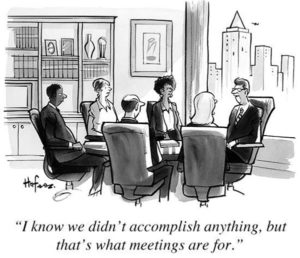Let’s get right down to it. Your banking relationship can be like a great marriage or a bad trip to the DMV. In most cases it is strictly your choice. But the results of that choice will reverberate for what could be years.
Yes, we will spend a moment reviewing the SVB-Signature Bank crisis that recently left many of us losing sleep. But we will do this in the context of our decision-making and protection of our businesses.
many of us losing sleep. But we will do this in the context of our decision-making and protection of our businesses.
For a start…
Did you even think of spreading your banking risk when receiving your first investment? Only 18% of SVB’s deposits were insured. Yes, I know much of this excess was from companies with lots more in the bank that we will even have. So, ask yourself if any of the executives or investors for those companies even considered spreading the cash among several banks just for safety?
We want to impress our bankers.
That’s natural. We may need our bankers when times are tough. Larger deposits now do impress bankers. But looking back on the SVB crisis, we dodged a bullet. Would we do it again?
Don’t le banker control our businesses. Think: protection first. Impressions second.
Now to the reasons to want to impress your banker:
How did you open your first bank account? Did you just walk into a branch, fill out the forms, take your first ten checks from your newly-opened account and leave? Do you even remember the name of the bank employee who helped you with that transaction? Well, that would have been your first mistake. As I’ve found in numerous companies over the years, the initial visit sets the stage for an entire relationship to follow.
[Email readers, continue here…] But why bother with a relationship if all you want is a checking account? Well, it’s time to tell a few true stories to illustrate why you should cultivate a relationship with a banker. And it is never too late, even if you opened that account years ago.
 Here’s an example – an unintentional overdraft in your checking account. Most of us have suffered this at least once if not more often. Whether caused by sloppy accounting or bad cash control or by a third-party taking money from your account for a recurring charge – or even by a PayPal purchase not recorded in the books, people or companies with marginal checking balances will someday be hit with an overdraft. Today, many banks charge $35 or so for each check paid with insufficient funds. One of my companies was recently hit with ten such charges in a single day before they realized the error, resulting in $350 in overdraft charges in a single day. So? Here are two alternative responses.
Here’s an example – an unintentional overdraft in your checking account. Most of us have suffered this at least once if not more often. Whether caused by sloppy accounting or bad cash control or by a third-party taking money from your account for a recurring charge – or even by a PayPal purchase not recorded in the books, people or companies with marginal checking balances will someday be hit with an overdraft. Today, many banks charge $35 or so for each check paid with insufficient funds. One of my companies was recently hit with ten such charges in a single day before they realized the error, resulting in $350 in overdraft charges in a single day. So? Here are two alternative responses.
Relationship banking: If the CEO or CFO had no relationship with the banker in charge of the account, there is little chance of receiving a waiver and reversal of the charges, even if your history with the bank is flawless. On the other hand, a good relationship and established history could and would usually result in a call to the banker, a short and rational explanation, followed by your banker’s immediate promise to reverse the charges. Yes, if this habit becomes routine, all bets are off, sometimes including whether the bank will keep your account open for you in the future.
And there are more important issues. Most business banks will grant a $50,000 line of credit through a bank-issued credit card, often requiring a personal guarantee. That is an expensive alternative, with costs for amounts carried over even for a few days beyond the due date running between 8% and 24% when annualized. With a good banking relationship, your banker can help with a line of credit at reasonable rates, fitted to your needs, and established in a way that will not drain cash each month affecting business health and growth. Yes, most banks will require a personal guarantee for such lines of credit, and even for equipment, receivables or other secured loans.
There is usually one exception: Some banks, especially those known as “venture banks,” will recognize the issue of a company with multiple investors, especially with a venture capital company as one of those. By substituting a small number of warrants to purchase stock in the company at a reasonable price for what would have been a personal guarantee, those banks will eliminate the need for the founder or CEO to sign such a guarantee, trusting instead the relationship with the VC company as of overriding importance.
Then again, this is how SVB got into trouble. They cultivated relationships with companies where VCs do their business and suggest this for their portfolio companies. So, remember “protect the business.”
There are many types of bank loans, including those guaranteed by the Small Business Administration (SBA) in which the bank and SBA share the risk for the loan. It is worth spending time with your relationship banker to discuss cash management, banking needs, and various opportunities.
But what happens when something goes wrong? Sometimes you get into a cash bind and cannot make a payment or even need to restructure a loan. This is the time when your personal relationship with your banker makes or breaks a company. Sounds a bit dramatic.
But think this: It is better to owe the bank than have them owe us!
Ever hear of the “workout” division of your bank? I hope not. That is the group your banker turns to when your account has shown signs of being too high a risk for the normal banking relationship. Your banker is removed from the process once that divide is bridged, and you are introduced to a “workout specialist” who dictates your banking future, typically by establishing new rules requiring accelerated repayment, perhaps sale of assets, direct bank collection of receivables to pay down loans, and other mild to draconian efforts to protect the bank and reduce its exposure.
You do not want to be sent to workout.
The risk is that the workout division will become much more aggressive when the bank is in trouble. Sound like a possibility here?
On the other hand, if you have been communicating your progress both positive and negative to your banker on a regular basis, that person can mitigate the more draconian moves if she or he understands the reasons for a temporary setback, having history and confidence in your abilities to work through the problem.
So, it is all about the relationship you establish when first walking in the door of your bank. And it is not too late if you failed to do this back then. You may not know who to call, and a cold call or visit to the local branch is a good start to establish that relationship and begin or reinforce the positive aspects of the banking experience.
This, along with thinking of protecting the business, It is just one more of the things a good manager does to ensure the ultimate success of an enterprise.

 move oil through the Internet” and then he moved on. Immediately after the panel presentation, I found that one entrepreneur and began a conversation that led to my investing $100,000 in his vision of a supply chain enterprise based upon perfect knowledge of oil delivery systems, precise timing of delivery and coordination of resources to move oil from source to customer using the Internet as a frictionless tool for communication and coordination.
move oil through the Internet” and then he moved on. Immediately after the panel presentation, I found that one entrepreneur and began a conversation that led to my investing $100,000 in his vision of a supply chain enterprise based upon perfect knowledge of oil delivery systems, precise timing of delivery and coordination of resources to move oil from source to customer using the Internet as a frictionless tool for communication and coordination.
 them to resign and begin a new business. But all will immediately question whether the new business will compete in any way with their enterprise and react to the future entrepreneur in either of two very distinct ways based upon those fears.
them to resign and begin a new business. But all will immediately question whether the new business will compete in any way with their enterprise and react to the future entrepreneur in either of two very distinct ways based upon those fears.
 unanimous: the quality of the proposed or actual management team comes in a strong first before the attractiveness of the business plan itself. The quest for a great management team is not a fluke, but rather a result of backward looks at the failure rate from past investments by those same angel investors and venture capitalists.
unanimous: the quality of the proposed or actual management team comes in a strong first before the attractiveness of the business plan itself. The quest for a great management team is not a fluke, but rather a result of backward looks at the failure rate from past investments by those same angel investors and venture capitalists. It is the management team, most often led by a passionate entrepreneur with experience in the industry, which makes the biggest difference between success and failure, even for businesses built upon less than sterling basic ideas. Among professional investors, almost all would rather back a great team with an average idea before backing a great idea and inexperienced team. It comes back to coachability and flexibility, also our insight from several weeks ago.
It is the management team, most often led by a passionate entrepreneur with experience in the industry, which makes the biggest difference between success and failure, even for businesses built upon less than sterling basic ideas. Among professional investors, almost all would rather back a great team with an average idea before backing a great idea and inexperienced team. It comes back to coachability and flexibility, also our insight from several weeks ago. and innovators that have done it before. This time they are aided by tail winds brought on by the rapid spread of access to the Internet and AI. Generative AI applications are moving so fast that two applications (ChatGPT and Midjourney) in November, 2022 are now hundreds of applications, many focused upon your particular niche.
and innovators that have done it before. This time they are aided by tail winds brought on by the rapid spread of access to the Internet and AI. Generative AI applications are moving so fast that two applications (ChatGPT and Midjourney) in November, 2022 are now hundreds of applications, many focused upon your particular niche. Our current graduating class of college seniors reflects much of the past needs of our economic society, just as they did in the early 1970’s, when many bet that aerospace jobs would continue to be the hot job ticket. The mismatch between what employers want today and graduating seniors majored in is striking. For example, 81% of businesses hiring today want graduates with business or accounting degrees. But only 19% of seniors have majored in this. Worse, 3.1% of seniors majored in computer science, while 65% of businesses looking to hire need these skills. And yet, with the rise of AI creating code, we don’t yet know how this will affect the need for new program coders, and shift that educational need to code architects, prompters and testers.
Our current graduating class of college seniors reflects much of the past needs of our economic society, just as they did in the early 1970’s, when many bet that aerospace jobs would continue to be the hot job ticket. The mismatch between what employers want today and graduating seniors majored in is striking. For example, 81% of businesses hiring today want graduates with business or accounting degrees. But only 19% of seniors have majored in this. Worse, 3.1% of seniors majored in computer science, while 65% of businesses looking to hire need these skills. And yet, with the rise of AI creating code, we don’t yet know how this will affect the need for new program coders, and shift that educational need to code architects, prompters and testers. periodically to attempt to nudge a prospect into signing. But without a firm, meaningful deadline, many of these bid-in-hand prospects will want to shop around, or delay the “yes” for budgetary reasons, or just ignore the offer for the short run.
periodically to attempt to nudge a prospect into signing. But without a firm, meaningful deadline, many of these bid-in-hand prospects will want to shop around, or delay the “yes” for budgetary reasons, or just ignore the offer for the short run. The most powerful tool you have in a sales environment is a deadline. If your prospect continually misses a deadline for no good reason, you have an earlier reason than usual to reduce the percentage of close to near zero in your sales prospect system, and that is a good move in making sales forecasts more realistic, if nothing else.
The most powerful tool you have in a sales environment is a deadline. If your prospect continually misses a deadline for no good reason, you have an earlier reason than usual to reduce the percentage of close to near zero in your sales prospect system, and that is a good move in making sales forecasts more realistic, if nothing else. Here I am a professional investor in early-stage companies, and I attempt to find those with the greatest chance of success and growth in value over time. Restaurant startups would not top my list.
Here I am a professional investor in early-stage companies, and I attempt to find those with the greatest chance of success and growth in value over time. Restaurant startups would not top my list.
 that could bite in the early morning. And heck, soon I found myself the father of a teen-age female driver, and truly understood my Dad’s admonition.
that could bite in the early morning. And heck, soon I found myself the father of a teen-age female driver, and truly understood my Dad’s admonition. We admonish our CEO’s to keep six to twelve months of liquidity available. We know from experience that raising money may be nearly impossible when economic times are tough, and when we have under-performed on our business plan. We tell our CEO’s to raise cash when not needed – because that is the time when it is easiest to raise. Or when the news is particularly good. Or the terms offered are especially favorable. Or even just when available at any reasonable cost in equity or interest.
We admonish our CEO’s to keep six to twelve months of liquidity available. We know from experience that raising money may be nearly impossible when economic times are tough, and when we have under-performed on our business plan. We tell our CEO’s to raise cash when not needed – because that is the time when it is easiest to raise. Or when the news is particularly good. Or the terms offered are especially favorable. Or even just when available at any reasonable cost in equity or interest. value to you and the company.
value to you and the company. “Is this just too little value for too much money?” – are adding to the dialogue in valuable ways and should be encouraged, not just tolerated.
“Is this just too little value for too much money?” – are adding to the dialogue in valuable ways and should be encouraged, not just tolerated. many of us losing sleep. But we will do this in the context of our decision-making and protection of our businesses.
many of us losing sleep. But we will do this in the context of our decision-making and protection of our businesses. Here’s an example – an unintentional overdraft in your checking account. Most of us have suffered this at least once if not more often. Whether caused by sloppy accounting or bad cash control or by a third-party taking money from your account for a recurring charge – or even by a PayPal purchase not recorded in the books, people or companies with marginal checking balances will someday be hit with an overdraft. Today, many banks charge $35 or so for each check paid with insufficient funds. One of my companies was recently hit with ten such charges in a single day before they realized the error, resulting in $350 in overdraft charges in a single day. So? Here are two alternative responses.
Here’s an example – an unintentional overdraft in your checking account. Most of us have suffered this at least once if not more often. Whether caused by sloppy accounting or bad cash control or by a third-party taking money from your account for a recurring charge – or even by a PayPal purchase not recorded in the books, people or companies with marginal checking balances will someday be hit with an overdraft. Today, many banks charge $35 or so for each check paid with insufficient funds. One of my companies was recently hit with ten such charges in a single day before they realized the error, resulting in $350 in overdraft charges in a single day. So? Here are two alternative responses. hundreds of other tools not available to the last generation of whiteboard, personal meeting or teleconference users. We read increasingly using our digital devices. We compute using our smartphones and tablets. We use gestures or our voice to control our engagement with our technology. We take courses on-line. We bypass the middle person for services and information.
hundreds of other tools not available to the last generation of whiteboard, personal meeting or teleconference users. We read increasingly using our digital devices. We compute using our smartphones and tablets. We use gestures or our voice to control our engagement with our technology. We take courses on-line. We bypass the middle person for services and information. just 720 million in 2000. Mobile workers are quickly overtaking the fixed desk worker and long-distance traveler. Mobile commerce is up 552% in one year (measuring cyber-Mondays). The mobile web will become what desktop Internet became in the 1990’s – the standard platform for anyone doing business.
just 720 million in 2000. Mobile workers are quickly overtaking the fixed desk worker and long-distance traveler. Mobile commerce is up 552% in one year (measuring cyber-Mondays). The mobile web will become what desktop Internet became in the 1990’s – the standard platform for anyone doing business.